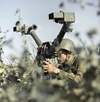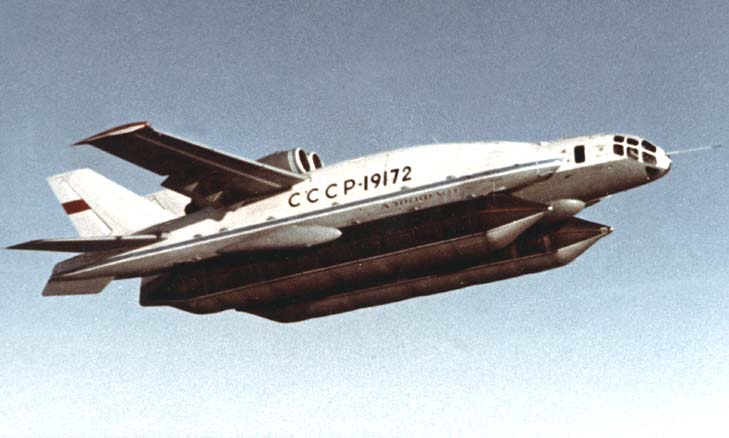Mustard did a mini doc on this thing. Pretty cool
+2
Isos
Backman
6 posters
The Strangest Aircraft Ever Built: The Soviet Union's VVA-14

Backman- Posts : 2706
Points : 2720
Join date : 2020-11-11
flamming_python and kvs like this post

Isos- Posts : 11601
Points : 11569
Join date : 2015-11-07
What a coincidence. I saw that in my suggestions like 3 hours ago on youtube. 
GarryB likes this post

kvs- Posts : 15857
Points : 15992
Join date : 2014-09-11
Location : Turdope's Kanada
The concept is not a failure. It got the usual half-assed treatment where some rinky dink outfit sabotaged the whole project.
This was the same for the N1 Moon rocket. Its design was given over to an enterprise which was not competent to do it.
This is in spite of the rocket engines being first rate.
The 8 meter flight altitude with full WIG effect is impressive. It could probably operate over the oceans as long as it avoided storm
systems. A 5000 ton flying ship is not as absurd as it would appear. But the flotation system definitely requires more advanced
solutions which may not be possible even today.
This was the same for the N1 Moon rocket. Its design was given over to an enterprise which was not competent to do it.
This is in spite of the rocket engines being first rate.
The 8 meter flight altitude with full WIG effect is impressive. It could probably operate over the oceans as long as it avoided storm
systems. A 5000 ton flying ship is not as absurd as it would appear. But the flotation system definitely requires more advanced
solutions which may not be possible even today.

flamming_python- Posts : 9541
Points : 9599
Join date : 2012-01-31
It was ahead of its time
We would need compact nuclear reactors before we can design lift engines with enough power. And I'm talking 4 lift-jets for an aircraft this size, otherwise it becomes too complicated and inefficient. So we would need to have advances in that aspect as well
The flotation system sounds doable with today's technologies, quite comfortably actually
But then there's also the question of - do we really need an aircraft like this today? With satellites, anti-sub torpedoes that can be mounted on long-range cruise missiles, sonar arrays and conventional aircraft that can drop sonar buoys at will?
Probably not
As it was, if it was brought to fruition - it would have remained likely a proof of concept rather than something that would be serially produced. Too exotic, too unreliable and too expensive would be my guess; and likely superseded by more practical and conventional means.
The prospect of building massive ekranoplans with VTOL engines though for a variety of uses both civil and military generally remains open however. Able to land in any clear area at land or sea, carry a massive payload of whatever, and traverse the globe at close to the speed of a plane.
But like I said, first we need compact nuclear power plants, and also research into new aerodynamic shapes and materials that would allow them to use the ground effect at higher altitudes, in order to traverse the oceans.
We would need compact nuclear reactors before we can design lift engines with enough power. And I'm talking 4 lift-jets for an aircraft this size, otherwise it becomes too complicated and inefficient. So we would need to have advances in that aspect as well
The flotation system sounds doable with today's technologies, quite comfortably actually
But then there's also the question of - do we really need an aircraft like this today? With satellites, anti-sub torpedoes that can be mounted on long-range cruise missiles, sonar arrays and conventional aircraft that can drop sonar buoys at will?
Probably not
As it was, if it was brought to fruition - it would have remained likely a proof of concept rather than something that would be serially produced. Too exotic, too unreliable and too expensive would be my guess; and likely superseded by more practical and conventional means.
The prospect of building massive ekranoplans with VTOL engines though for a variety of uses both civil and military generally remains open however. Able to land in any clear area at land or sea, carry a massive payload of whatever, and traverse the globe at close to the speed of a plane.
But like I said, first we need compact nuclear power plants, and also research into new aerodynamic shapes and materials that would allow them to use the ground effect at higher altitudes, in order to traverse the oceans.
kvs likes this post

GarryB- Posts : 40537
Points : 41037
Join date : 2010-03-30
Location : New Zealand
Actually the concept of what is essentially a flying hovercraft is a good idea... it can land or move over flat surfaces of any density including water and snow and sand and dirt and bog, and with wings it can also take off a fly even faster.
A vehicle like this for transport in rough locations with little to no infrastructure would be useful... it could land on rivers or the sea or lakes whether liquid or frozen, on dirt or paved runways or even rocky flat terrain.
The VSTOL feature is irrelevant and just makes things harder... instead of inflatable pontoons, it needs some sort of retractable skirt hovercraft design so it can land and come to a stop on any surface... in fact such an undercarriage could be used for an airship too.
Imagine a radar airship with hovercraft undercarriage that could operate with carrier groups but can land and be refuelled by ship... you could have a few different models... one being a radar equipped AWACS aircraft, while another might just be cargo transport, or fuel carrier, or weapon reloading aircraft to reload vertical missile launchers at sea.... it could carry short range drones and pick them up from the sea surface (for sea surface and underwater drones), and it could lower variable depth sonar into the water to look for subs... you could hang ELF cables (which are big 2-3km long antenna for extremely low frequency radio communication with deeply submerged submarines... the Tu-142 struggles to use these because the antenna needs to be as vertical as possible to work which means it has to fly at very low speeds and risks stalling when using this antenna... an airship could just drop a line and it would be vertical without any weight or floater on the end to make it straight in forward flight...
You could drop or pick up mini subs from the sea surface with such an airship too.
A vehicle like this for transport in rough locations with little to no infrastructure would be useful... it could land on rivers or the sea or lakes whether liquid or frozen, on dirt or paved runways or even rocky flat terrain.
The VSTOL feature is irrelevant and just makes things harder... instead of inflatable pontoons, it needs some sort of retractable skirt hovercraft design so it can land and come to a stop on any surface... in fact such an undercarriage could be used for an airship too.
Imagine a radar airship with hovercraft undercarriage that could operate with carrier groups but can land and be refuelled by ship... you could have a few different models... one being a radar equipped AWACS aircraft, while another might just be cargo transport, or fuel carrier, or weapon reloading aircraft to reload vertical missile launchers at sea.... it could carry short range drones and pick them up from the sea surface (for sea surface and underwater drones), and it could lower variable depth sonar into the water to look for subs... you could hang ELF cables (which are big 2-3km long antenna for extremely low frequency radio communication with deeply submerged submarines... the Tu-142 struggles to use these because the antenna needs to be as vertical as possible to work which means it has to fly at very low speeds and risks stalling when using this antenna... an airship could just drop a line and it would be vertical without any weight or floater on the end to make it straight in forward flight...
You could drop or pick up mini subs from the sea surface with such an airship too.
kvs likes this post

Mir- Posts : 3824
Points : 3822
Join date : 2021-06-10




